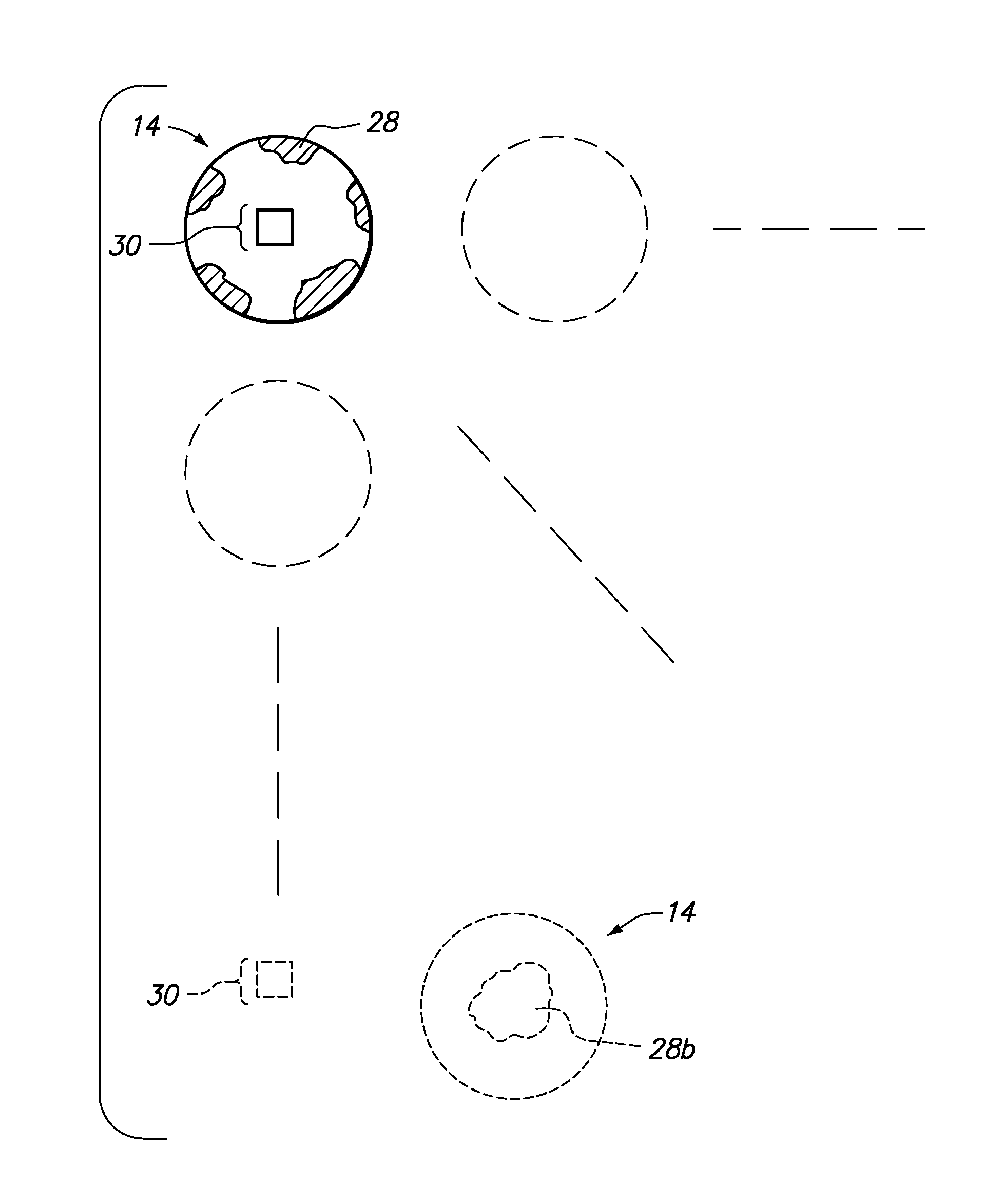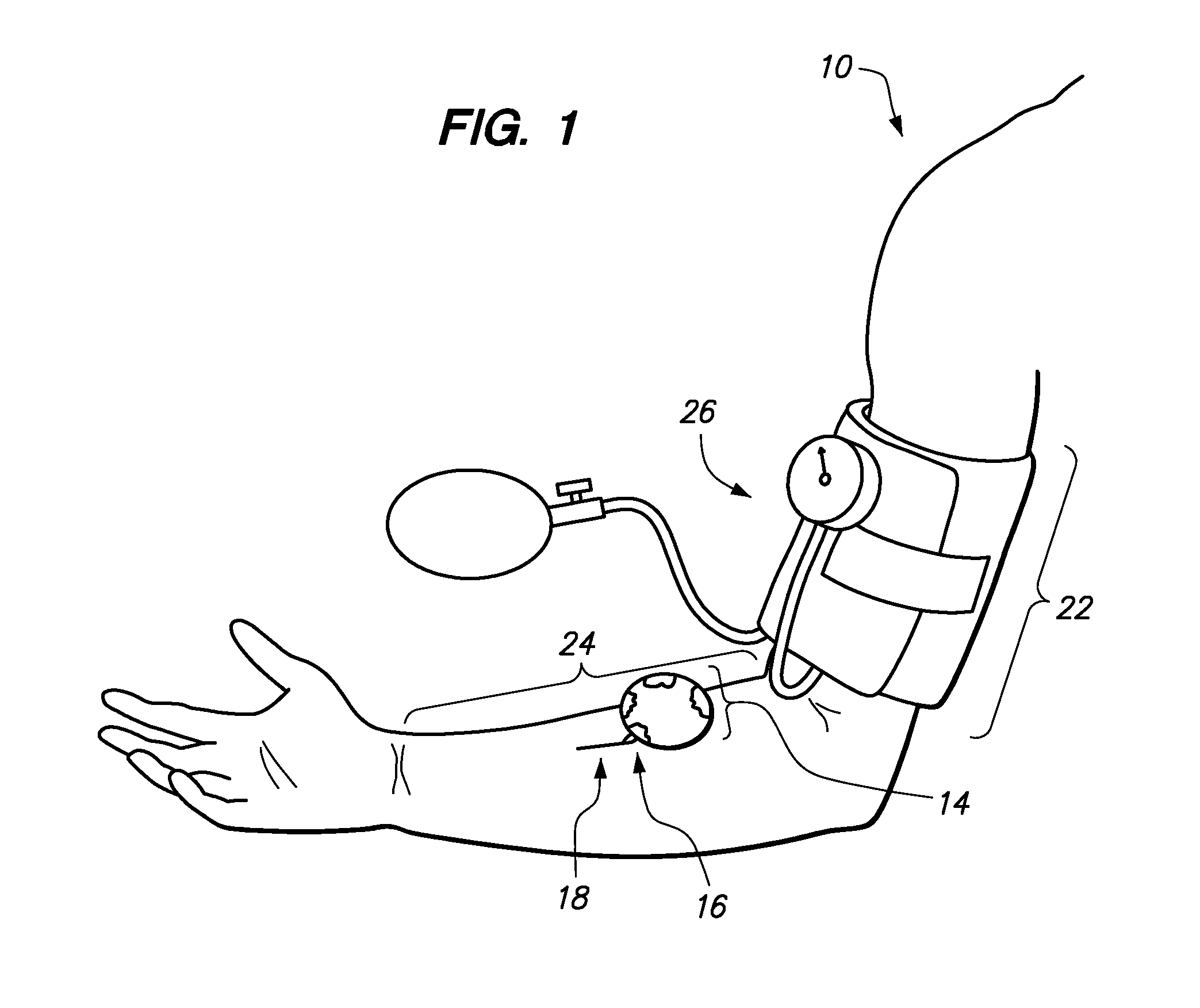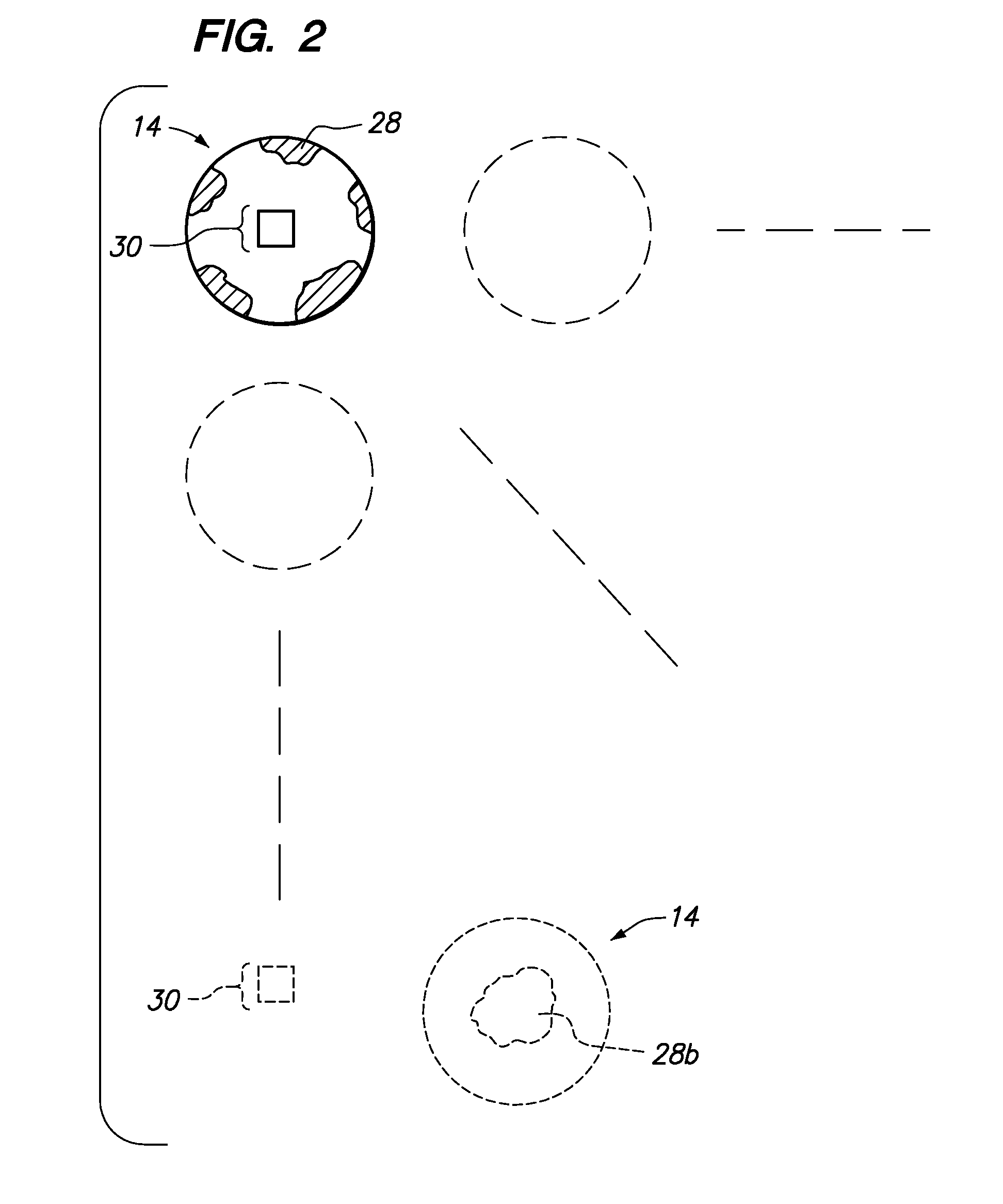In-vivo platelet function test by online bleeding volume measurement
a technology of platelet function and online measurement, which is applied in the direction of measurement devices, instruments, material analysis, etc., can solve the problems of increased bleeding risk, patient may be susceptible to bleeding, and the in-vitro test may not take into account all the factors involved
- Summary
- Abstract
- Description
- Claims
- Application Information
AI Technical Summary
Benefits of technology
Problems solved by technology
Method used
Image
Examples
Embodiment Construction
[0047]Referring now to the drawings, a method for determining bleeding volume of a patient 10 at a remote location 12 is disclosed. Bleeding volume is the volume of blood lost during a bleeding time test. Bleeding time is a total length of time between the moment a standardized tiny superficial incision is made in the skin of a patient and the moment the bleeding stops. As shown in FIG. 1, the edge of a blotter paper 14 is used to absorb discrete blotches of blood 16 oozing out of an incision 18 during sequential thirty (30) second time intervals. The blotter paper 14 absorbs the blood 16 oozing out of the incision 18 until the patient 10 stops bleeding. One or more blotter papers 14 may be necessary to absorb all of the blood 16. The blotter paper(s) 14 (see FIG. 2) may be scanned as an image and transmitted 32 to a service provider 20, as shown in FIG. 3. The service provider 20 may be an internet server, database server, a group of medical professionals or a business that provide...
PUM
| Property | Measurement | Unit |
|---|---|---|
| core temperature | aaaaa | aaaaa |
| core temperature | aaaaa | aaaaa |
| core temperature | aaaaa | aaaaa |
Abstract
Description
Claims
Application Information
 Login to View More
Login to View More - R&D
- Intellectual Property
- Life Sciences
- Materials
- Tech Scout
- Unparalleled Data Quality
- Higher Quality Content
- 60% Fewer Hallucinations
Browse by: Latest US Patents, China's latest patents, Technical Efficacy Thesaurus, Application Domain, Technology Topic, Popular Technical Reports.
© 2025 PatSnap. All rights reserved.Legal|Privacy policy|Modern Slavery Act Transparency Statement|Sitemap|About US| Contact US: help@patsnap.com



